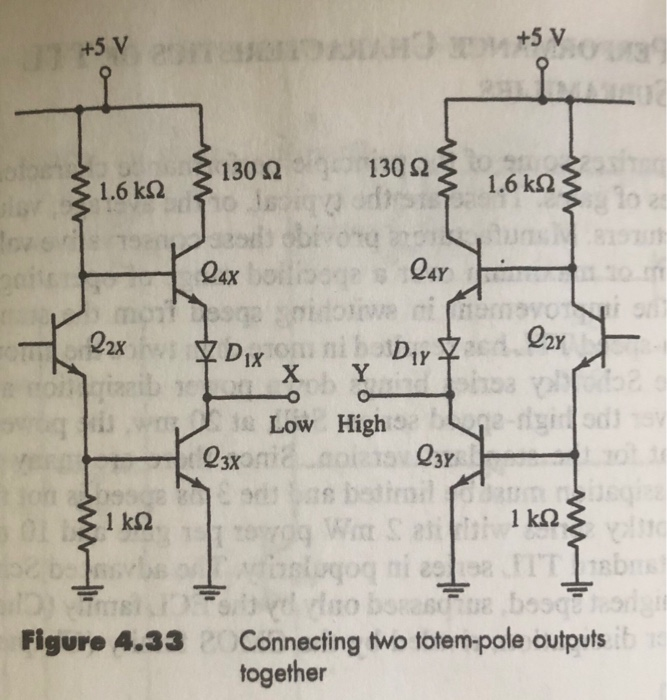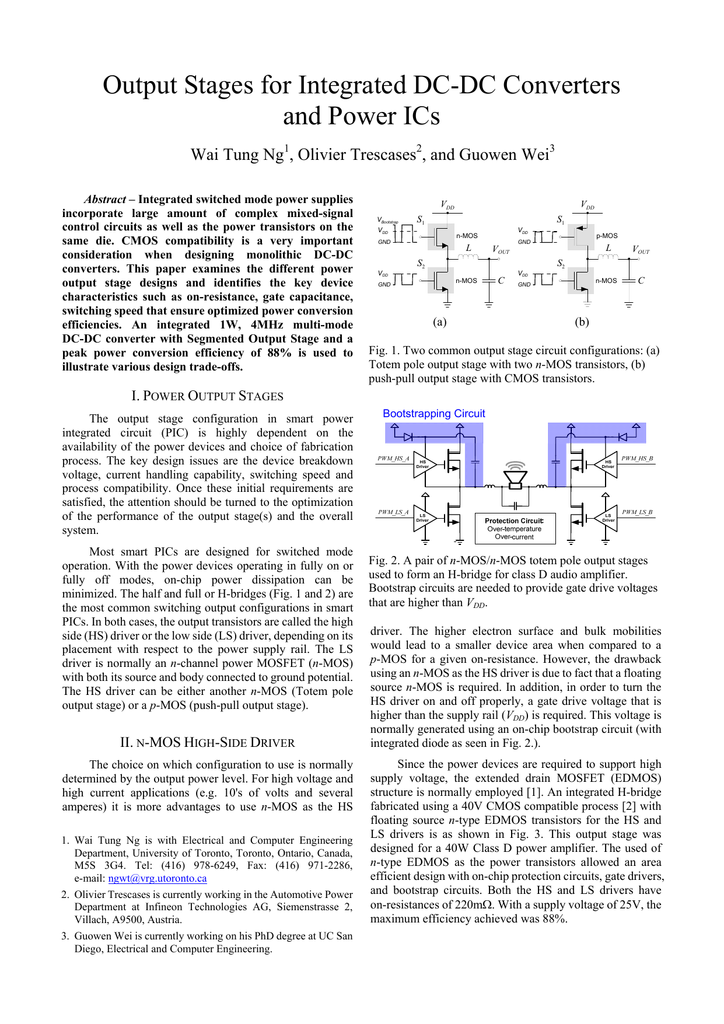
In contrast with a normal totem-pole output, it cannotīe the source of current and therefore cannot present a logic-HI on its own. Of Q3 is left open-circuited, hence the name open-collector.Īn open-collector output has current sinkingĬapabilities, that is, it can present a logic-LO output. Observe here that the circuit elements associated with Q4 in the totem-pole circuit are missing and the collector This circuit you can follow how the OUTPUT changes from 0 to 5 volts.įigure 6.3 shows the schematic of a typical TTL gate with open-collector output, for example, a 7403 NAND gate. Conversely, when Q3 is open, Q4 is closed. In other words, when Q3 is closed, Q4 is open. At any time, only one of the two switches is closed while the Transistors Q3Īnd Q4 behave as switches controlled by the INPUT. ThisĬonfiguration with Q4 stacked on top of Q3 is referred to as a totem-pole output.Īlso shown in Figure 6.2 is a simplified schematic of the operation of the totem-pole output. Such that the operation of Q3 and Q4 are complementary, that is, when one transistor is ON the other is OFF. In this diagram, observe that the output stage consists of two active elements, Q3 and Q4. The schematic of a typical TTL 7400 NAND gate is shown in Figure 6.2. Of gates and flip-flops is still essential. Regardless of the IC's complexity or how it is created, basic knowledge In higher volumes by the IC manufacturer. The final chip may either be burned on the spot using a programmable logic array (PLA) or may be produced

All simulation and debugging is conducted on the computer before the chip The design engineer selects all gates and logic functions Usage of discrete SSI and MSI functions such as gates, flip-flops and registers have decreased over the years.Ĭomplex electronic circuits for high volume production are produced today using ASICs (application specific ICs)Ĭompiled entirely using a computer-aided design (CAD) system. If you examine a typical circuit board today you will find more use of large ICs with hundreds of pins and fewer Reference: Understanding Computers, Time-Life Books. LSI - Large scale integration - >1000 transistors (100 to 3000 gates)ġ971 - Intel 4004 microprocessor, with 2,250 transistors.ġ978 - VLSI - Very large scale integration, >10,000 transistors (1000 - 30,000 gates)ġ979 - Motorola 68000 microprocessor, 70,000 transistors.ġ985 - ASICs (application-specific ICs) appear with >100,000 gates.ġ995 - CPU, memory functions available in ASICs with >1 million gates. MSI - Medium scale integration - >100 transistors (10 to 300 gates) SSI - Small scale integration - >10 transistors (1 to 30 gates) It would be instructive to look at a chronology of computer electronics.ġ906 - Vacuum tube invented by Lee De Forest.ġ946 - The ENIAC digital computer built, 18 feet high x 80 feet long, with 17,000ġ947 - Transistor invented by William Shockley.ġ955-1965 - Discrete transistor usage increases.ġ958 - Integrated circuit invented by Jack Kilby. In order to put into perspective where the above devices fit into the scheme of things and how far we have come, Sub-families with their characteristics and designations

The following table is a growing list of various TheĬhart shows the speed-power relationship of common TTL families.ĭigital IC manufacturers are continually trying to minimize the delay-power product and continue to produceįamilies with different characteristics to suit specific needs. Families can be characterized by the relationship between propagation-delay and power.

These two tend to be directly related, i.e., higher speedĬonsumes more power. Of each logic family are speed and power consumption. Two important factors in the consideration Many second-generation families, each with different operating characteristics. Technology which exhibits low power and high noise immunity. Another common structure is CMOS ( complementary metal-oxide-silicon) A common structure is the bipolar transistor/transitor logic (TTL) which you willīe using in the laboratory.
#HIH CURENT TOTEM POLE OUTPUT MANUAL#
4D6 Lab Manual - Chapter 6 Chapter 6 Gate Characteristics


 0 kommentar(er)
0 kommentar(er)
